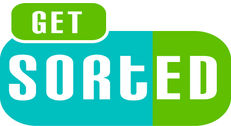SORTED Guide to Sustainability in Further Education – Part 3 - Teaching, learning and curriculum – 3.5 Challenging Thinking and Approach
The table below is a useful guide with key questions to ensure that lessons become more effective vehicles for sustainable development. It suggests that what is needed is not so much new curriculum or lesson content, but a revised and extended approach that presents content in a changed context.
Based on Webster, 2001
| Key Question |
Changed Thinking |
| Is there a sustainable development context that I can use in this lesson? If so, does my lesson tackle the multi-dimensional nature of sustainable development? Does it tackle causes and solutions as well as symptoms of unsustainable activities e.g. waste, pollution, poverty? |
Think bigger picture - include the seven concepts of sustainable development or other approaches. Think causes and solutions as well as symptoms. |
| Is my lesson FUTURE orientated? Do learners get to consider probable and preferable futures? |
Think sustainability long term. |
| Does my lesson feature viable SOLUTIONS? Do some solutions demand less from the environment and allow access to more people? |
Think sufficiency, resource efficiency, waste reduction. Think alternative technology. Think alternative economies of time and social welfare. Think social and environmental justice. |
| What is needed to achieve sustainable solutions? Does my lesson feature opportunities for change? |
Think technology, beliefs and behaviour, prices, markets, laws, regulation, planning, social welfare, media, lifestyles. |
| Where are the most effective opportunities for change located? Is my lesson realistic about power and social change strategies? |
Think individual, community, business, government and media at different scales (locally, nationally, regionally and globally). |
| Do solutions promote identity, democracy and active and critical citizenship? |
Think rights of present and future generations and the rest of nature. Think environmental citizenship. Think how education can empower people to realise their common interest in sustainable development together with more fulfilling lives and identities. |
Prioritise and offer support to staff
To enable sustainability to be embedded into subject areas, staff need to know it is an institutional priority, and be allocated time to make this happen – to learn about what this means for their areas, and create a response.
Providing staff with CPD time, planning time and shared-learning space are all great ways of supporting staff to effectively embed sustainability. A valuable resource is the space to share experiences and learning with colleagues – what worked, what challenges they have, an opportunity to work together to enhance how they successfully include sustainability into their teaching. Action-learning sets can offer good support here, as staff members share their experiences, offer support, and reflect on outcomes together.





 Except where otherwise stated, content on this site is
licensed under a Creative Commons Attribution 3.0 License.
Except where otherwise stated, content on this site is
licensed under a Creative Commons Attribution 3.0 License.
